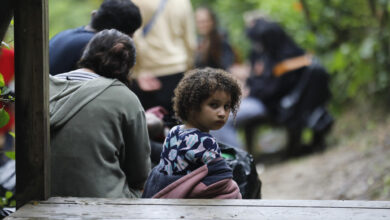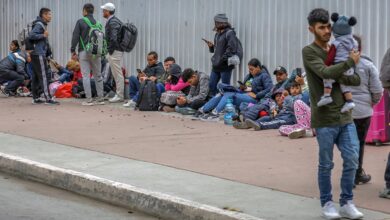Health and Migration, a Challenging Combination for Latin America
The Region has one of the Largest Migratory Movements in the World, According to the International Organization for Migration (IOM). However, many Migrants are in a Situation of Vulnerability. Health Care is a Challenge Today.

Photo: Reuters
LatinAmerican Post | María Fernanda Ramírez Ramos
Listen to this article
Leer en español: Salud y migración, una combinación desafiante para América Latina
In Latin America, one of the largest migratory movements in the world takes place, according to the International Organization for Migration (IOM). However, many migrants are in a situation of vulnerability.
For this reason, the Pan American Health Organization (PAHO) launched this month the Information Platform on Health and Migration in the Americas. This is an initiative that aims to help the countries of the region to guarantee the right to health of migrants. In this sense, it provides statistics from the different countries, information on regulatory frameworks and research that would allow defining public policies, with information from 19 countries in the region.
The intention is that governments can exchange knowledge to create health initiatives that respond to the challenges of growing migration in the continent. Likewise, it will function as an information repository for social organizations and researchers working in these areas. This digital platform was created in conjunction with the Universidad del Desarrollo, in Chile, and the Universidad Torcuato Di Tella, in Argentina.
A more urgent phenomenon after the pandemic
Although migration already posed major health challenges before the coronavirus pandemic, today it is an even greater challenge that needs to be addressed more urgently in order to prevent new disease outbreaks and curb the growth of inequality in the region. "The transit from South America of migrants from the Caribbean, Asia, Africa and the Americas has been taking place for approximately a decade, and it has increased dramatically due to the socioeconomic, health and political impact of the COVID-19 pandemic", says the IOM.
However, the pandemic not only increased migratory flows, but also caused various health initiatives on the continent to be neglected, both in prevention and care. In fact, PAHO Director Carissa Etienne noted that "2.7 million children in the Americas did not receive the necessary vaccines to keep them healthy in 2020." For these reasons, for example, cases of tuberculosis, measles and malaria have increased.
We suggest you read: The Coronavirus reversed the plan to end tuberculosis
In this sense, migrants today constitute one of the most vulnerable groups to suffer from diseases and not receive timely care. On the other hand, their mental health is also in a complicated situation, as many are victims of cultural violence, through discrimination, racism and the stress that displacement and family separation mean. "Today, millions of migrants in the region face challenges at every stage of the migration process, without access to primary health care services, medicines, vaccines, or mental health services and psychosocial support," says Dr. Jarbas Barbosa, Deputy Director of the PAHO.
What are the findings?
The information platform offers a map of scientific articles on health and migration that includes 709 scientific articles from more than 399 institutions throughout the region. Likewise, it offers a mapping of the political, legal and regulatory frameworks in this area with a human rights-based approach, which includes 469 documents from 19 States.
One of the most interesting findings is that, in addition to the barriers and difficulties that migrants have in accessing health services in the countries they arrive in, there are cultural factors that are intensifying these barriers. One of the reports on the quality of medical care for migrants indicates that the provision of medical services must be respectful of the culture of the people, since it has been shown that health service providers may have stereotyped opinions about international patients, causing them to feel uncomfortable and disrespected.
Therefore, there are gaps in the training of health personnel on cultural diversity. This is especially important because many migrants have experienced traumatic events that require them to also receive mental health care. Likewise, there is a lack of interpreters to help improve communication processes. It should be noted that this is a transversal phenomenon in the region, since the same barriers are found in the United States or Canada, as well as in Argentina, Brazil and Colombia, to give an example.
In conclusion, migration is a growing and real phenomenon that cannot be turned a blind eye to. It is necessary to create policies, based on the protection of human rights, that provide quality health care, regardless of where people come from, since it responds to the most fundamental aspects of human life, which most states have committed to safeguarding in international treaties.
Nor can it continue to be ignored that there are countries that have become places of transit and that, although migrants do not formalize their situation in these territories, their transit through them in conditions of extreme vulnerability requires urgent humanitarian attention. For example, this is the case of what is happening in the Darién Jungle. Who should answer for those people? A coordinated regional strategy is required to address the challenges of migration, uniting the efforts of regional governments, but also academia, civil organizations and communities.
As much as the hate speeches towards migrants, which have been made visible in some recent electoral campaigns in the region, are present, their dignity and right to the protection of their life and health cannot be ignored. In this sense, education is also a key factor that allows people to deal with interculturality.




